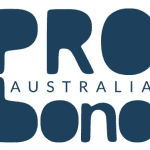Together, We Are The Future of Work

6 October 2017 at 3:01 pm
Monika Gisler and Hiam Sakakini from ThinkChangeGrow offer some tips on finding common ground in the baby boomers vs millennials debate.
Baby boomers vs millennials. You know the drill. It is a debate that never seems to end, with impassioned arguments loaded and ready to be fired from each side. This generation divide has become something that is so obvious and transparent in the workplace.
But have we ever stopped to think about the damage that this constant “us versus them” dialogue can have within teams trying to operate at their best everyday?
With workplaces undergoing digital change, it only fosters this harmful generational tension that encourages segregation. Our skills and values are almost immediately ascertained by our age. This only polarises us. We never seem to look at the similarities that bind our generations.
If we are insistent on focusing on generational differences, this is where teams become dysfunctional and stagnate cultures are created. It is an all-too familiar pitfall that sees businesses lose grip of sustainable, long-term success.
The avoidance of falling down this rabbit role lies in a simple idea: people and culture are the backbone of every organisation.
When leaders start to leverage the differences in general within the organisation, businesses have the capability to move from a merely problem-solving approach to an abundance approach, in which performance drastically exceeds the norm.
Similarities outweigh differences in the workplace
The baby boomers vs millennials debate is arguably the most popular. The rhetoric being that millennials are on top of everything digital whereas boomers are not. Millennials are lazy. They don’t understand what hard work is. And it goes on and on.
Instead of splitting hairs about how different the generations are, how about we look at the commonalities?
According to the 2016 Gallup survey below, there is actually quite a higher number of striking similarities between the generations. High-quality management that actively emphasises on empowering their team to explore new opportunities and grow, is of high priority.
A healthy and happy workplace thrives upon fostering a dynamic environment that is fulfilling, interesting and creative.

So how exactly can we use these common denominators to our advantage in the workplace?
Tips on finding common ground
The best teams flourish because they have a common purpose and motivation regardless of age. Their success lies in understanding and embracing their differences, and making the best use of it.
For example, we need to stop thinking of leaders as those that are appointed as “managers” and start thinking of leaders at all levels of an organisations, leveraging an individual’s capacity to step up when they see a problem that needs solving or are passionate about an idea.
It all boils down to our workplace culture. Is it open in a way that individuals are not afraid to speak up? An environment that celebrates diversity and wants everyone to succeed?
These are the factors that attract and retain talent. Millennials are not afraid to step up and lead an initiative or project if given the opportunity. However, they need the coaching and mentoring of generations before them to support this innate entrepreneurial flair.
“It is not about being taught what to think but rather how to think. It is something that is important for my generation and the ones before to learn and implement so that we can all better deal with the changes in the workplace today,” says Anne Massey, participant of The Greater Collective, a leadership program that throws a diverse group of leaders headlong into complex challenges posed by a charity to solve.
The Greater Collective has seen the unifying power of establishing a mutual answer to: what is the impact that we want to achieve together?
From coming up for innovative solutions for Cerebral Palsy Alliance to Australian Design Centre, the program saw multi-generational leaders who were keen to make a significant impactful difference for charity organisations with creativity and social responsibility driving their collaborative problem-solving.
The Greater Collective is a great example of both baby boomers and millennials being driven by wanting to make a positive difference. Businesses must develop a common ground in doing “good through business” and avoid separating the two.
The focus on bringing the best in people and culture within the workplace through recognising shared values, has never been more clearly needed with websites like Glassdoor where reviews about company from its working culture to opinions of the CEO themselves can be published anonymously and circulated rapidly. And of course, anxieties over jobs being automated and made redundant.
“So much of our current workforce will be automated and what is going to be left for people are the things that computers can’t solve easily: collaborative creativity, innovation and design thinking,” says Daniel Murray, head of the IAG Foundation and guest speaker at The Greater Collective.
About the authors: Monika Gisler and Hiam Sakakini share more than 20 years of building innovative leadership capacity at Google, one of the most disruptive and ever-changing workplaces in the world. Founded last year, ThinkChangeGrow is their people and culture consulting agency that aims to build empathetic, emotionally intelligent leaders who propel positive social change in their own workplace and for vulnerable populations like that of the disability and aged care sectors of the Australian health industry.








